Besides being an enjoyable and attractive activity, gardening is also a valuable source of both environmental bounty and health benefits. Proper gardening requires the right tools, despite its simplicity. We will be examining the names of the 15 most effective gardening tools and their respective applications in detail.
1.Hand Trowel.

One of the most versatile gardening tools is the hand trowel. This is a small, hand-held device with slanted blade and handle that has curved metal blade.
Uses:
- Small holes for seed, bulb, or transplant.
- Scooping soil or compost.
- Removing weeds from the soil.
Tips for Effective Use:
- Use a trowel that is soft and easy to hold for long periods.’
- Before planting, use the pointed end to compact the soil and make it less dense.
- Keep the blade clean to prevent rust and maintain efficiency during use.
2. Pruning Shears (Secateurs)
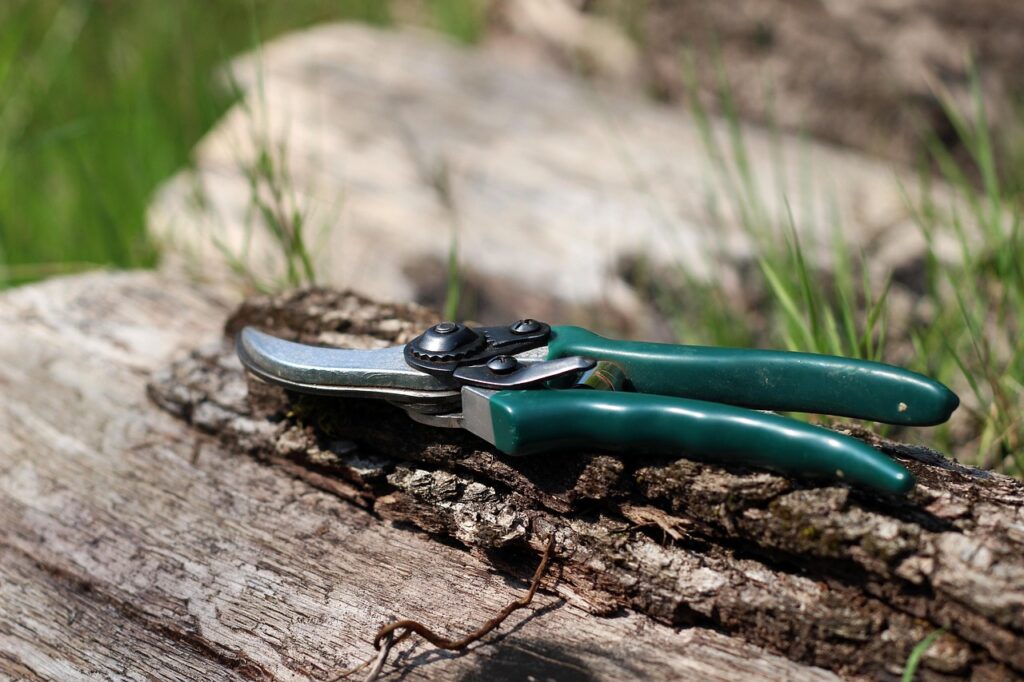
Prunking shears are utilized to cut and shape plants. There are several types, including bypass and anvil pruners….
Uses:
- De-cluttering foliage, branches and stems.
- Eliminating diseased or dead plant parts..
- Harvesting fruits and flowers.
Tips for Effective Use:
- Employ anvil pruners for dead wood while bypass pruned for live stems.
- Maintain blade sharpness to ensure effective plant pruning through clean cuts.
- Discard disease before using the blades.
3. Garden Fork.

The garden fork is equipped with durable, angled tines and is ideal for all-natural gardening purposes.
Uses:
- Breaking up compacted soil.
- Boosting soil pH for better water/nutrient absorption.
- Turning compost piles.
Tips for Effective Use:
- Opt for a garden knife equipped with sturdy, durable tines.
- The tool can be bent at an angle to effectively penetrate and elevate soil.
- To prevent harm to the tines, use caution when applying force.
4.Garden Hoe.
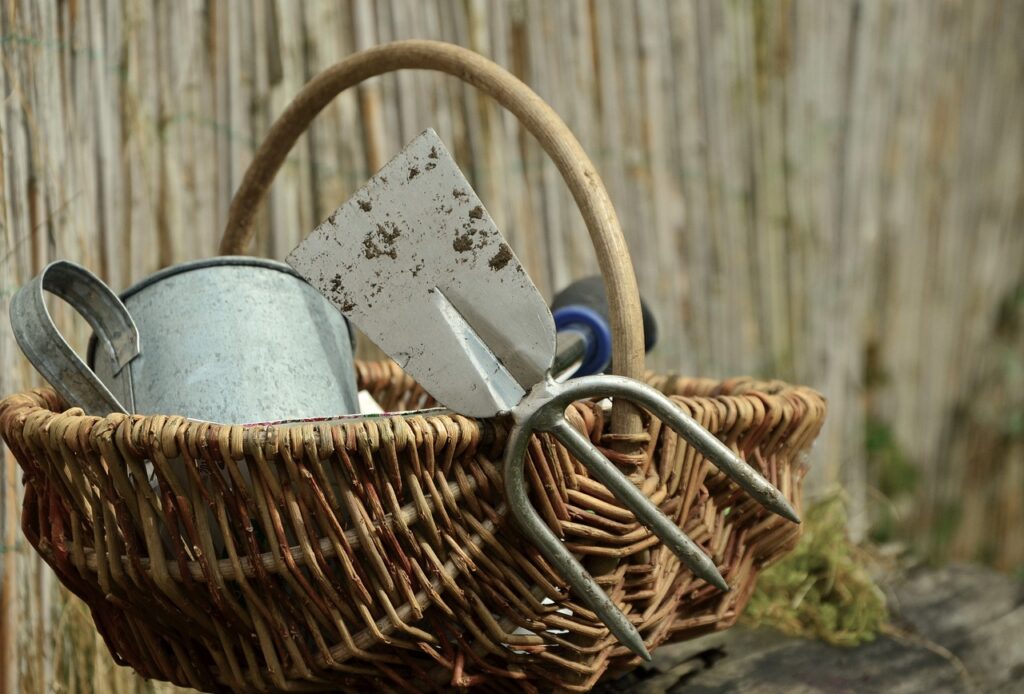
The tool known as a garden hoe is characterized by its flat, angled blade and long handle. It’s essential for preparing the soil and controlling weeds.
Uses:
- Loosening soil for planting.
- Shaping planting rows.
- Weeding over the top of the soil.
Tips for Effective Use:
- Opt for a draw hoe to dig or scuffle hob to clear an area for cleaning.
- Ensure that the blade remains sharp to enhance efficiency.
- To avoid causing disturbance to nearby plants, use short, controlled strokes.
5.Spade.

A long-handled, flat, rectangular blade is known as a spade. It makes a great tool for digging and moving soil.
Uses:
- Digging trenches or planting holes.
- Edging garden beds.
- Transplanting shrubs and perennials.
Tips for Effective Use:
- Tape the top edge of the blade to exert enough force to dig.’
- Clean the edges of garden beds with a flat blade.
- A durable spade with a strong blade is the best choice for heavy duty work.
6.Rake.

The use of rakes can vary, with some being more like leaf rakes and others like the garden runner akin to an apple orchard.
Uses:
- Harvesting leaves, debris, and grass clippings.
- Leveling soil or mulch.
- Breaking up soil clumps.
Tips for Effective Use:
- To remove light debris, use a leaf rake or re-purpose it for scrubbing with whichever rag is used.
- Avoid pressing excessively on delicate surfaces.
- After using, clean the tines and leave them in place.
7.Watering Can.
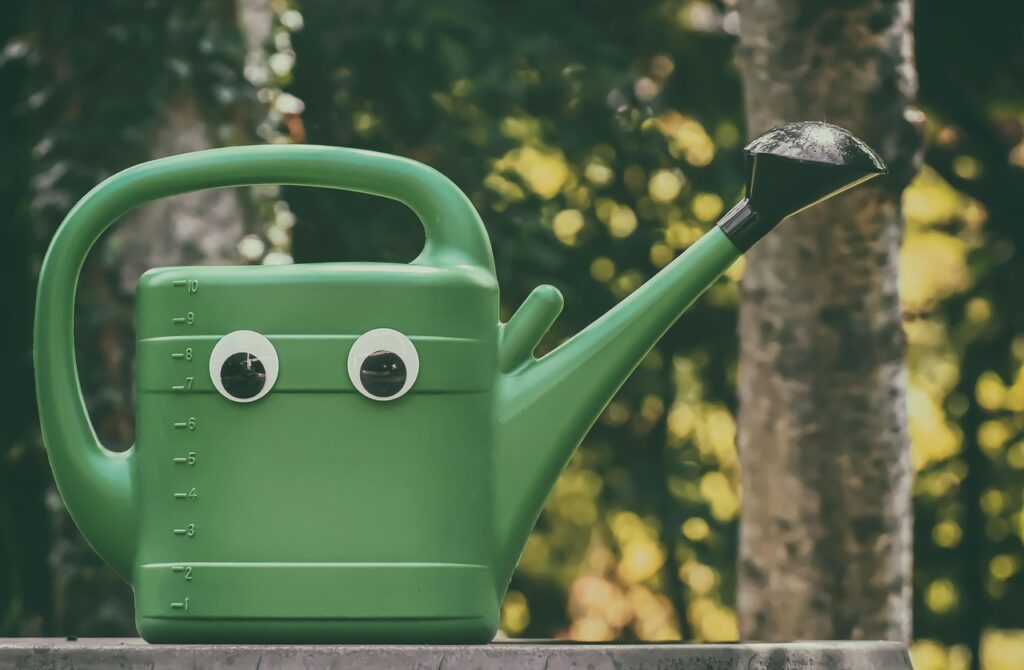
To ensure proper drainage of water, it is necessary to use a drip container to directly reach your plants.
Uses:
- Watering indoor and outdoor plants.
- Applying liquid fertilizers.
- Preserving delicate seedlings and young plants by hydrating them.
Tips for Effective Use:
- Choose a watering can that has nozzles for controlled irrigation, which are removable.
- Limit the can’s contents to what you are capable of carrying.
- To reduce evaporation, it is recommended to drink water in the morning or afternoon.
8.Garden Gloves.
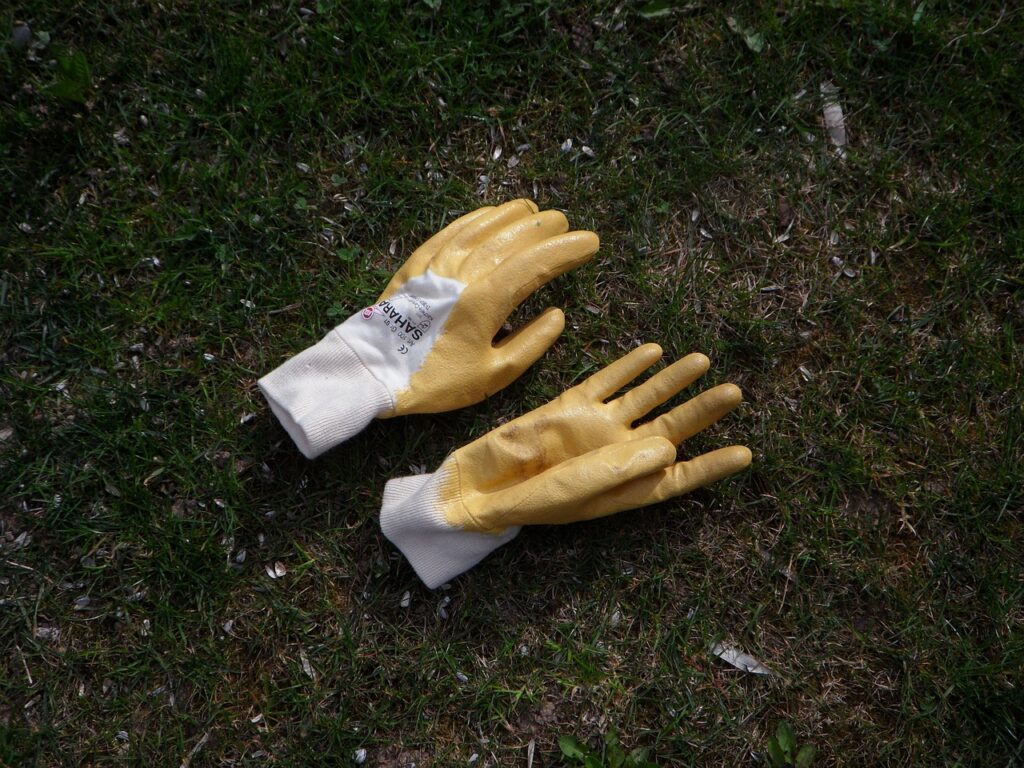
Hands protection: Gardening gloves protect your hands from dirt and blisters and can hurt.
Uses:
- Hand protection against chemicals, sharp objects, and thorns. 1.
- Felting while working with slippery objects.’…
- Preventing blisters during prolonged tasks.
Tips for Effective Use:
- Pick gloves with a long-lasting fabric that is light and comfortable.
- After using, gloves should be washed to prevent dirt buildup.
- Have several pairs for different tasks, such as heavy lifting and delicate gardening.
9. Wheelbarrow.
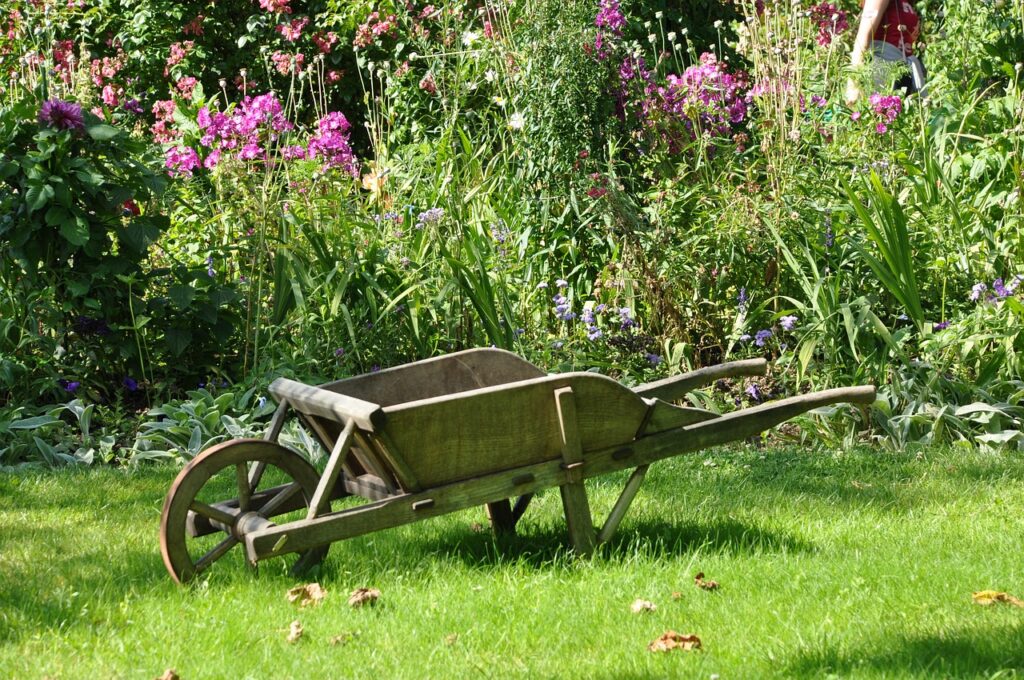
The container that carries heavy loads around the garden is known as a wheelbarrow.
Uses:
- Moving soil, mulch, or compost.
- Carrying tools and plants.
- Transporting garden debris for disposal.
Tips for Effective Use:
- To prevent tipping, distribute the load in a uniform manner.
- Invest in pneumatically mounted wheelbarrows.
- To prolong its lifespan, wash it after use..
10. Garden Knife.
The cutting and digging tool that a hori-horo knife is used in gardening is also known as ibuo.
Uses:
- Descrewing string or plant roots.
- Digging small holes or trenches.
- Removing weeds with deep roots.
Tips for Effective Use:
- For hard wood sawing, the serrated edge is ideal.
- Ensure that the blade remains rust-free and sharp.
- If you are not using it, store the knife in a protective covering to prevent any harm.
11.Garden Sprayer.
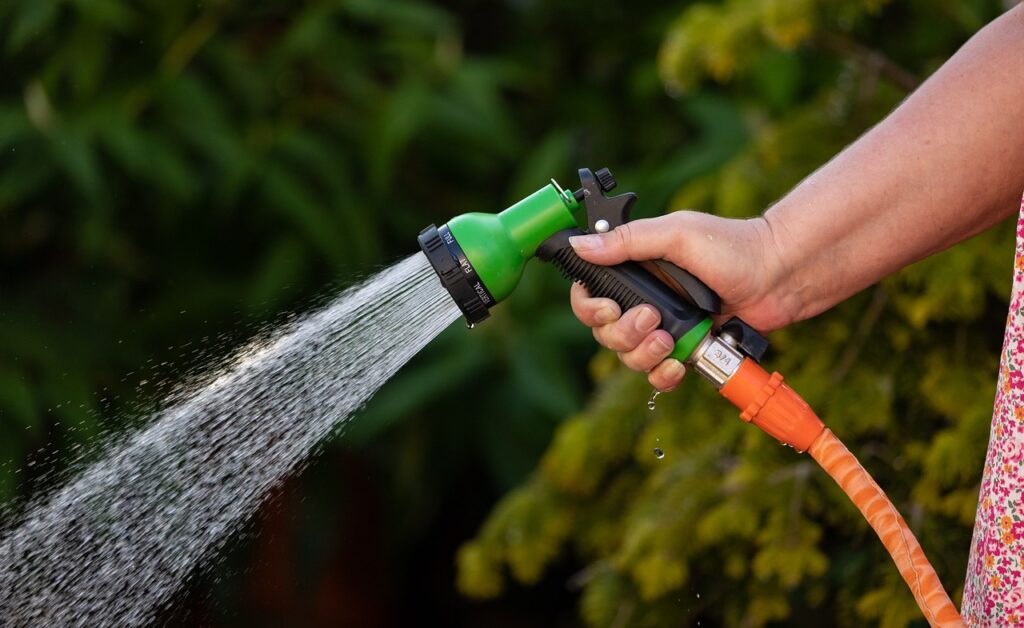
Garden sprayers are used for the application of a variety of liquid treatments, including fertilizers, pesticides and herbicides.
Uses:
- Spraying liquid fertilizers on plants.
- Applying pest control solutions.
- Disinfecting garden tools and surfaces.
Tips for Effective Use:
- Follow the manufacturer’s directions when blending solutions.
- Ensure that the sprayer is completely decontaminated after every use.’
- To prevent cross-contamination, separate sprayers for different chemicals.
12. Loppers.
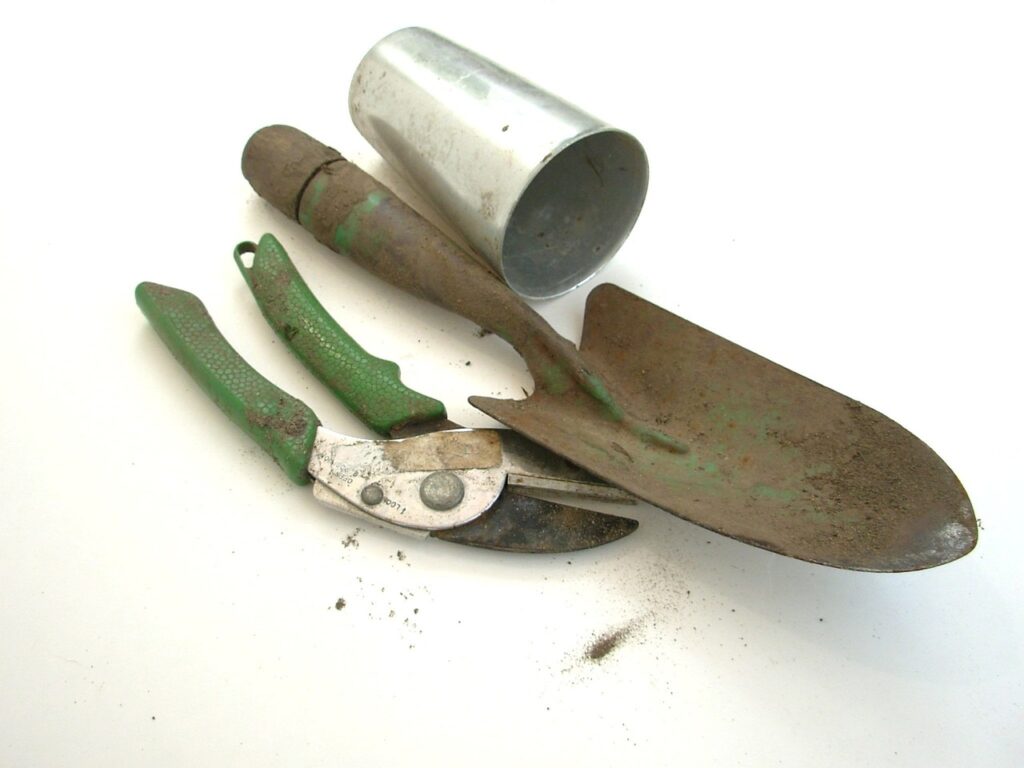
For cutting thick branches and stems, loppers are tools with long handles that are used for pruning.
Uses:
- Trimming tree branches.
- Cutting overgrown shrubs and hedges.
- Removing dead or diseased wood.
Tips for Effective Use:
- For live branches, use bypass loppers and for dead wood, anvil a.k.”.
- Ensure that the blades are sharp for precise cutting.
- Avoid slicing thick branches beyond the tool’s tolerance range.
13.Garden Scissors.
Garden scissors are compact and effective tools for intricate pruning tasks. Why?
Uses:
- Grazing herbs, flowers, and small fruits.
- Deadheading flowers.
- Cutting thin stems and twine.
Tips for Effective Use:
- Keep the blades clean and sharp for optimal cutting performance.
- Forget cutting your own scissors, use gardening scissors.
- Prevent corrosion by storing in a dry place.’
14. Soil Tester.
You can use a soil tester to test the pH, moisture,and nutrients of your garden oil.
Uses:
- How do you determine the ideal pH of soil for plant growth?
- Managing moisture levels to avoid any over- or under-watering. The.
- Assessing nutrient levels for fertilization.
Tips for Effective Use:
- Ensure that the manufacturer’s instructions are followed.
- Conduct soil tests in various areas for a thorough analysis.
- Apply the findings to make informed decisions regarding soil amendments.’
15. Garden Weeder.
Handheld garden weeders are devices with a narrow blade or forked tip that are used to remove bare root.
Uses:
- Uprooting weeds from the soil.
- Discarding unwanted plants in close proximity to each other.
- Loosening soil around roots.
Tips for Effective Use:
- Apply the forked end to grip and eliminate deeply rooted plants.
- Utilize the moist soil to achieve a smoother removal process.
- Take measures to ensure the prevention of weeds from spreading.
Conclusion.
Getting the right gardening equipment for your garden is crucial for a productive and enjoyable experience. Just get started today. These 15 gardening tools are essential for any garden project, and they can help you with precise naming and usage. The proper maintenance and use of these tools can help keep your garden in good condition all year, regardless of whether you’re a beginner or an expert.
